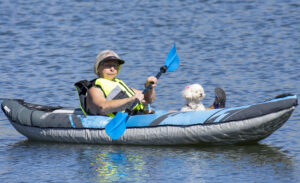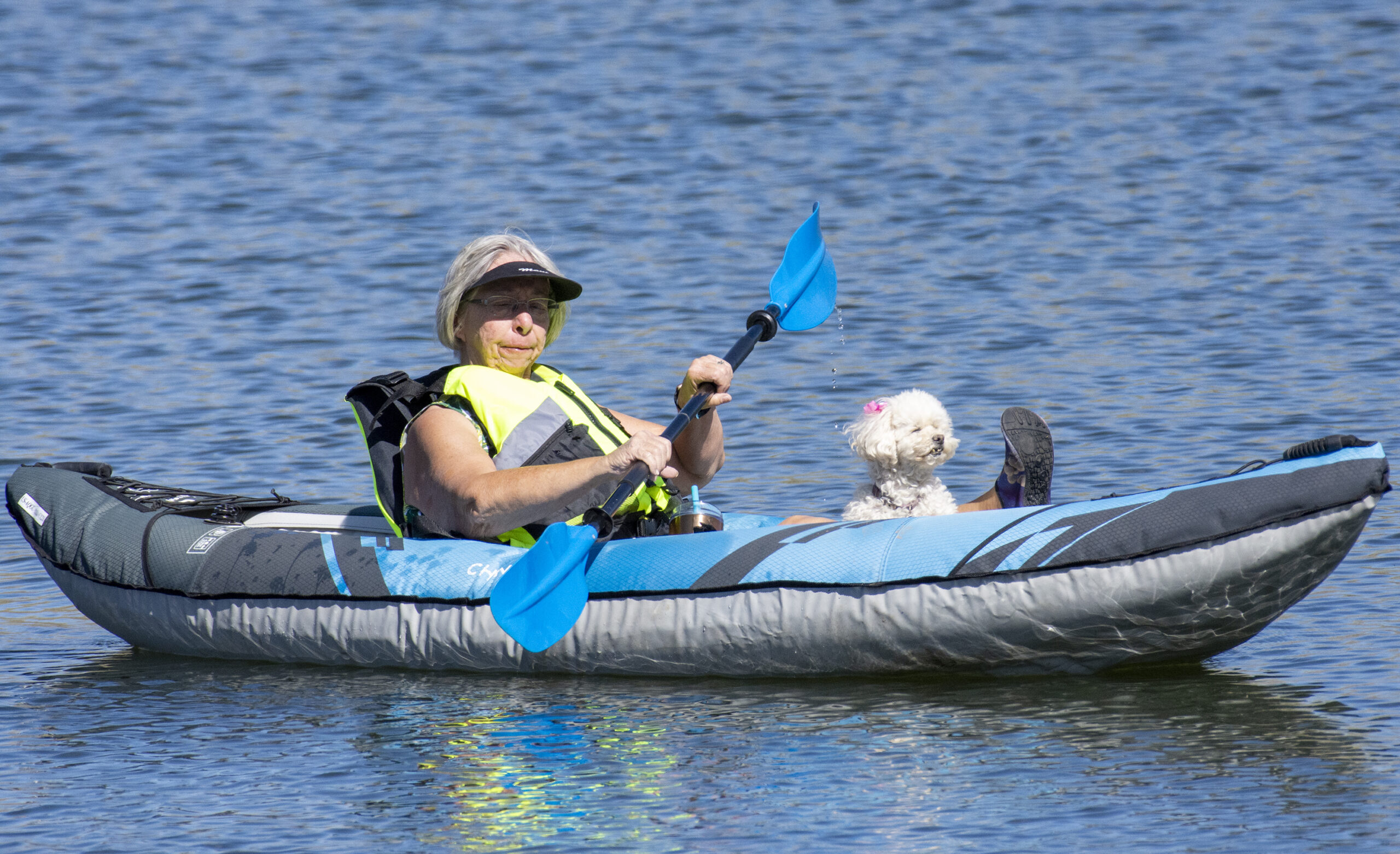
A woman sets off on her water outing Friday at Chatfield State Park, wisely with a life jacket on.
DENVER – As Colorado’s weather starts to warm and paddle sport enthusiasts come out of hibernation, Colorado Parks and Wildlife would like to remind them to be careful of the windy and cold water conditions.
The best safety precaution one can take is to wear a life jacket at all times while out on the water.
“We see a large increase in requests for help from kayakers and stand-up paddleboarders during windy conditions,” said Kris Wahlers, Park Manager at Chatfield State Park. “It’s not unusual for paddlers to plan to stay close to shore, but get blown across the lake or into spots difficult to get out of when wind comes up.”
Getting blown off course can happen very quickly and is difficult to return from because of a headwind and waves. People use a lot of energy paddling and maintaining balance making it harder to paddle in those conditions.
What’s worse, it is easy to lose your balance and get separated from your paddleboard or kayak in windy conditions. It’s best to avoid being in those conditions from the get-go, and that plays into the responsibility of the user to know before you go.
Check the weather report before you come to the lake and watch the conditions while you are there.
“Wind typically moves in from the west in the early afternoon, pay close attention to that direction and time to avoid being caught unaware,” Wahlers added. “If you do get caught, it’s best to wait for conditions to improve or to walk along the shoreline if possible. Anytime you’re paddling, the easiest way to stay safe is to wear your life jacket.”
Power boaters need to be aware as well.
“It’s generally easier for power boats in windy conditions while everything is in good working order,” Wahlers said. “If they lose power, that can change very quickly.”
Boaters are asked to make sure their boat is in good working order, bring plenty of fuel, an anchor if they need to keep from moving during a power loss and a paddle if they need to move. A good rule of thumb for anchoring is to have three times more rope than the water is deep, so 150 feet of rope in 50 feet of water. Not having enough rope doesn’t allow the anchor to set well and it could work itself out.
Take precautions to protect yourself from the heightened dangers of sudden, unexpected cold water immersion while on early and late season boating outings, especially on small boats.
“Anglers, swimmers, paddlers and all boaters must be aware of the risks of cold water,” Wahlers said. “Paddlers and any boater on the water can take precautions and prevent being suddenly thrown overboard, swamped or stranded in cold water.”
Sudden immersion in cold water can cause gasping and inhalation of water and hypothermia, resulting in unconsciousness or swimming failure as muscles become numb. Wearing a life jacket will keep your head above water and support your body should your swimming ability fail or you become unconscious.
CPW officers have noticed a lot of people overestimate their ability to ‘swim out of a problem.’ Because of this, CPW recommends anyone out on the water wear a life jacket.

Leave a Reply